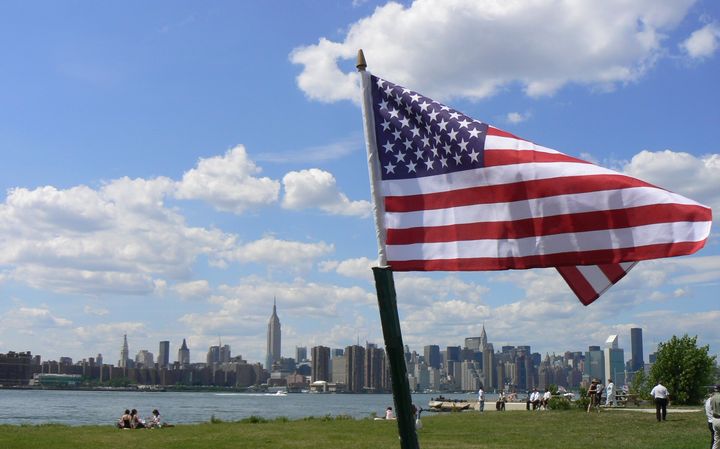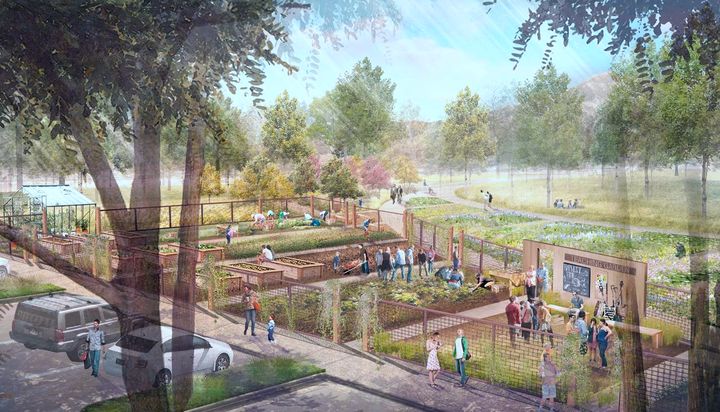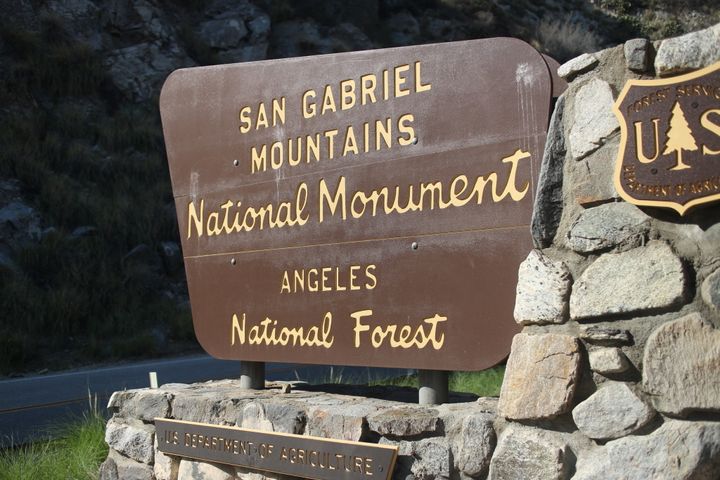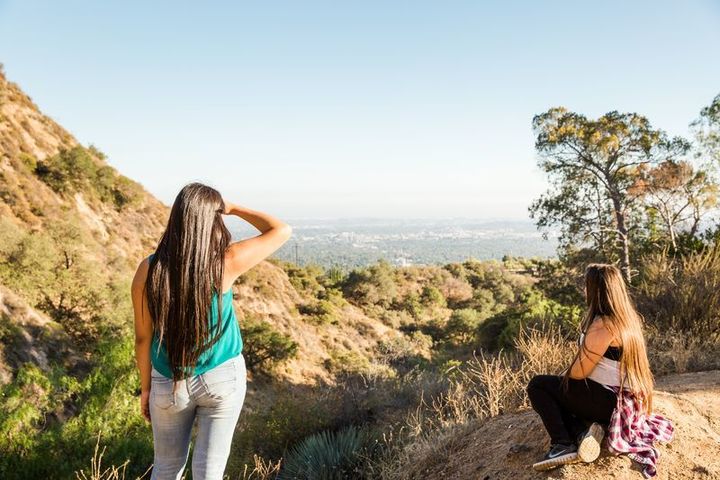
A view of the Manhattan skyline from East River State Park in Brooklyn, NY.
As millions of Americans prepare to celebrate our collective national birthday on July 4 by getting outside, whether in the backyard or at a nearby park, we should also celebrate one of the most genuinely American ideas--public spaces held in the public trust, for all of us.
Recently, I’ve visited a number of parks in cities across America, some of them well-established, some brand new, and some where construction is just beginning. I’ve also visited some of the busiest national parks and other public lands around cities, lands which are now under threat from an openly hostile administration.
Not only has President Trump begun a “review “ of 27 National Monuments designations covering several decades, but a major source of Federal funding used for land conservation for the last 50 years is also under threat. The Land and Water conservation Fund (LWCF), which uses offshore oil and gas drilling fees instead of citizen tax dollars, faces possible elimination if it is not reauthorized and funded by Congress: You can help preserve and enhance the LWCF by clicking here.
What follows is an informal and highly personal guided tour, an appreciation of the growing need for public parks for our increasingly urbanized nation, some thoughts on the threats which face them, and what we can all do to ensure our public lands survive and thrive.
Cook Park, Atlanta, Georgia:

A rendering of the future Cook Park in Atlanta, GA.
In Atlanta’s historic African-American Vine City neighborhood, a low area prone to flooding is being turned into a spectacular new 16-acre park. It will provide all the normal benefits to local residents, including places to get outside and be healthy, and a center for community gatherings. But it also has two other important roles: a living tribute to the Civil Rights pioneers who lived there, and a large and complex system to capture storm water and help prevent floods, similar to the Old Fourth Ward Park, built as part of the Atlanta Beltline project several years ago.
On a recent visit, I passed by a humble brick ranch house a few streets away. My guides told me it was the residence of the late Rev. Dr. Martin Luther King, who was living there with his wife, Coretta Scott King, when he was assassinated in 1968. While the Trust for Public Land led an effort to protect and restore much of what is now the Martin Luther King Jr. National Historic Site, I was astonished to learn this house is not only unprotected, but also completely unmarked. As part of the plan for Rodney Cook, Sr. Park, to be named for a former Atlanta City alderman and Georgia state representative who stood up for civil rights despite personal attacks and threats, Cook Park will contain monuments to a number of Civil Rights leaders from Vine City and the greater Atlanta community.
Story Mill Community Park, Bozeman, Montana:

Planned Teaching Garden at Story Mill Community Park in Bozeman, MT.
Bozeman is not most people’s idea of a big city. Located 90 miles from the world’s first national park, Yellowstone, Bozeman is rich with small neighborhood parks, a county park and swimming lake just off the downtown grid, and it is surrounded by vast public lands.
Bozeman is one of the fastest-growing cities in the country, but the city hasn’t planned for new parks in almost a century. That is changing, though because the city and The Trust for Public Land are working to create a flagship community park on 60 acres next to the richly historical Story Mill site in northeast Bozeman. With a master plan approved last fall, the park will feature opportunities for active recreation (trails, playgrounds, dog park, etc.), outdoor community gathering spaces, a fabulously imaginative playground, a nature sanctuary along almost a mile of restored blue-ribbon trout steam, new trails and trail connections, and natural and cultural interpretive programs. Story Mill Community Park represents extensive partnerships across the community including the university, nonprofit organizations, city government, neighborhood organizations, local schools, and others.

Breaking ground on the new Story Mill Community Park in Bozeman, MT.
After four and half years of planning, ground was broken for the park on June 24. It will be built during the 2017 and 2018 building seasons (roughly spring – fall) and if the remaining $1.5 million can be raised, it will open in fall, 2018. To learn more or support the park, visit here.
San Gabriel Mountains, Los Angeles:

The San Gabriel Mountains National Monument brings much-needed open space to the people of Los Angeles County.
In sprawling Los Angeles County, as in many cities, many residents lack access to parks and public lands. As development and growth continues to take over open space, the country is at risk of losing some of our most cherished outdoor escapes.
Three years ago, President Obama declared a National Monument for 3,460,000 acres in the San Gabriel Mountains, near downtown Los Angeles. He said, “the wilderness is a segment once called part of the geography of hope. I want to ensure this geography of hope is for all Americans...so everybody in this diverse community, no matter where they come from or what language they speak can enjoy everything this monument has to offer.”
But the monument is threatened, because it is on the review list of 27 monuments announced by President Trump for potential downsizing or even elimination. Public comments are being sought through July 10 (here’s where you can add your comment, or here: www.regulations.gov).
The monument includes most of the land in the San Gabriel Mountains, along with a significant portion of the Angeles National Forest, the first national forest in California. The mountains are part of the Transverse Range, one of the only east-to-west mountain ranges in North America, and were once described by John Muir as a place where “Mother Nature is most ruggedly, thornily savage.”
The Forest Service says more than 5 million people annually use the San Gabriels for recreation, with most of those coming from the more than 17 million Americans who live within 90 minutes of the monument. It provides 70% of the open space in Los Angeles County, and 30% of the county’s drinking water.
In his review order, Trump called previous presidential designations “a massive federal land grab” and said his directive would end “another egregious abuse of federal power” and “give that power back to the states and to the people where it belongs.”
But local grassroots activists, like San Gabriel Mountains Forever Coalition, worked long and hard to establish the national monument and protect the lands. Now, these same activists are regrouping and fighting to maintain the San Gabriel’s monument designation.

Taking in the view from the San Gabriel Mountains.
The Trust for Public Land (TPL) has been working to protect land in the San Gabriels for the last 40 years. It has protected more than 4,400 acres in the San Gabriel Mountains, their foothills, and the nearby Angeles National Forest. Through acquisitions such as Gale Ranch, which added 151 acres of natural lands to the beautiful and popular Claremont Hills Wilderness Park, TPL is continuing to work with local partners to establish a green line of protected land on the urban edge, saving a landscape one place at a time.
So as Americans head out to their favorite outdoor spots this holiday, they should enjoy recreational activities, or just bathing in nature’s beauty and restorative powers, and they should also recommit to making sure that public parks and lands thrive and stay public.
